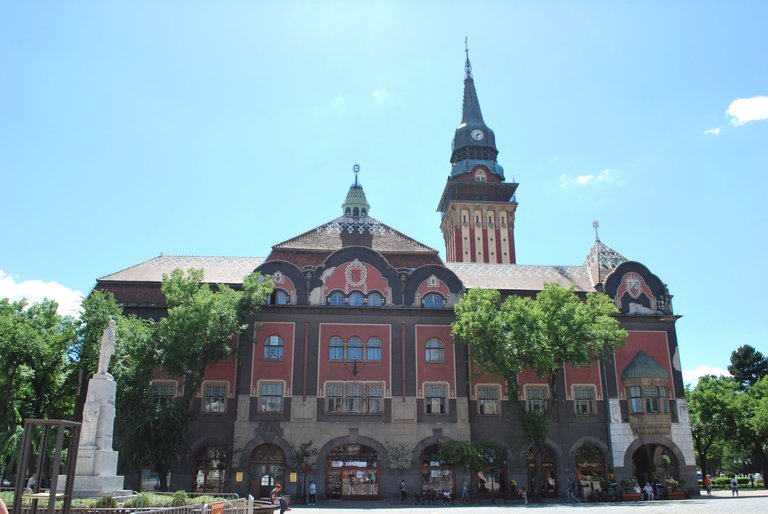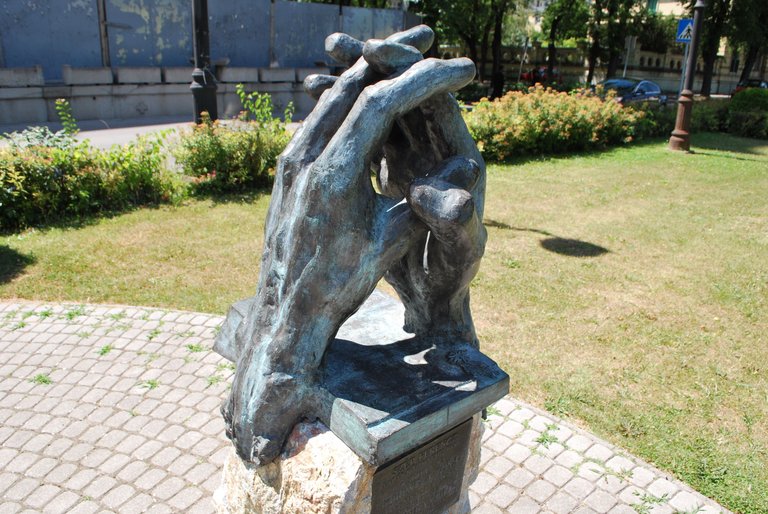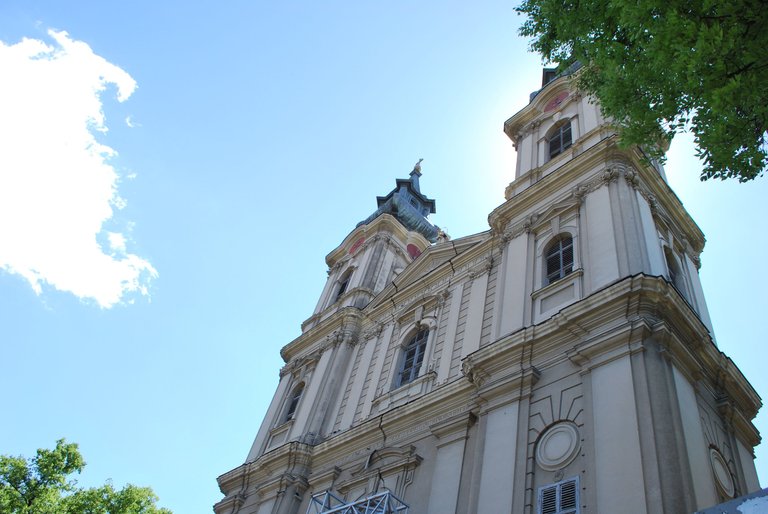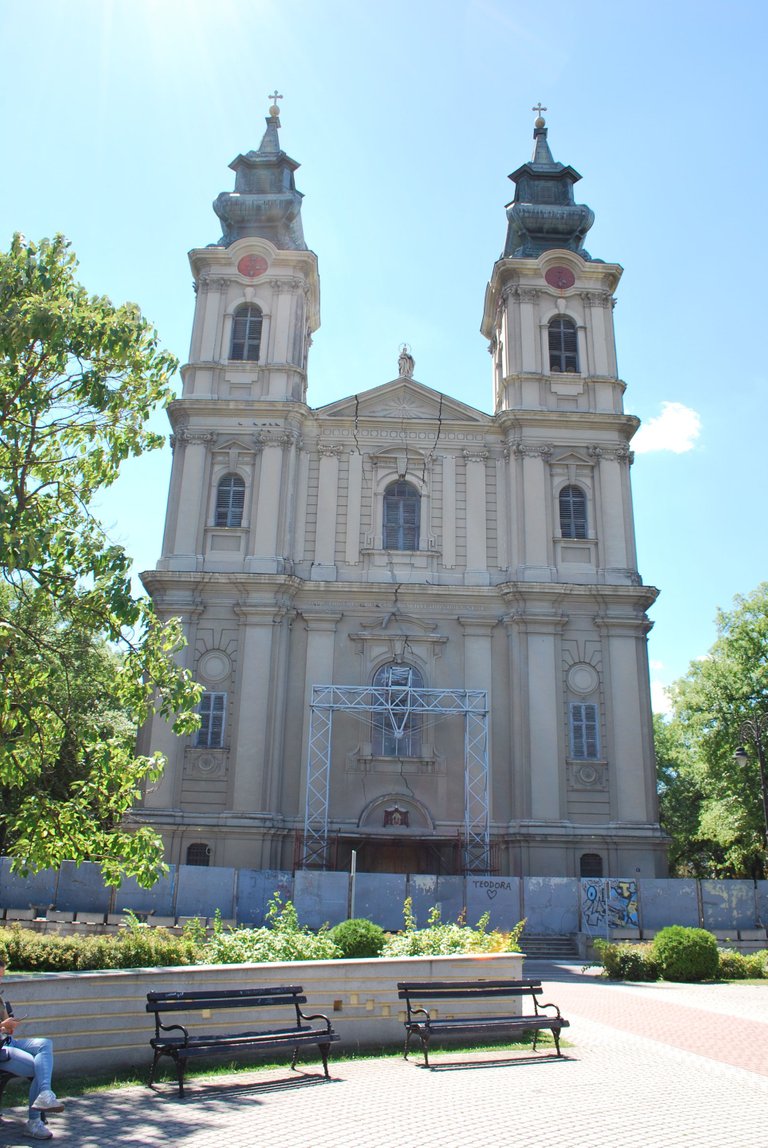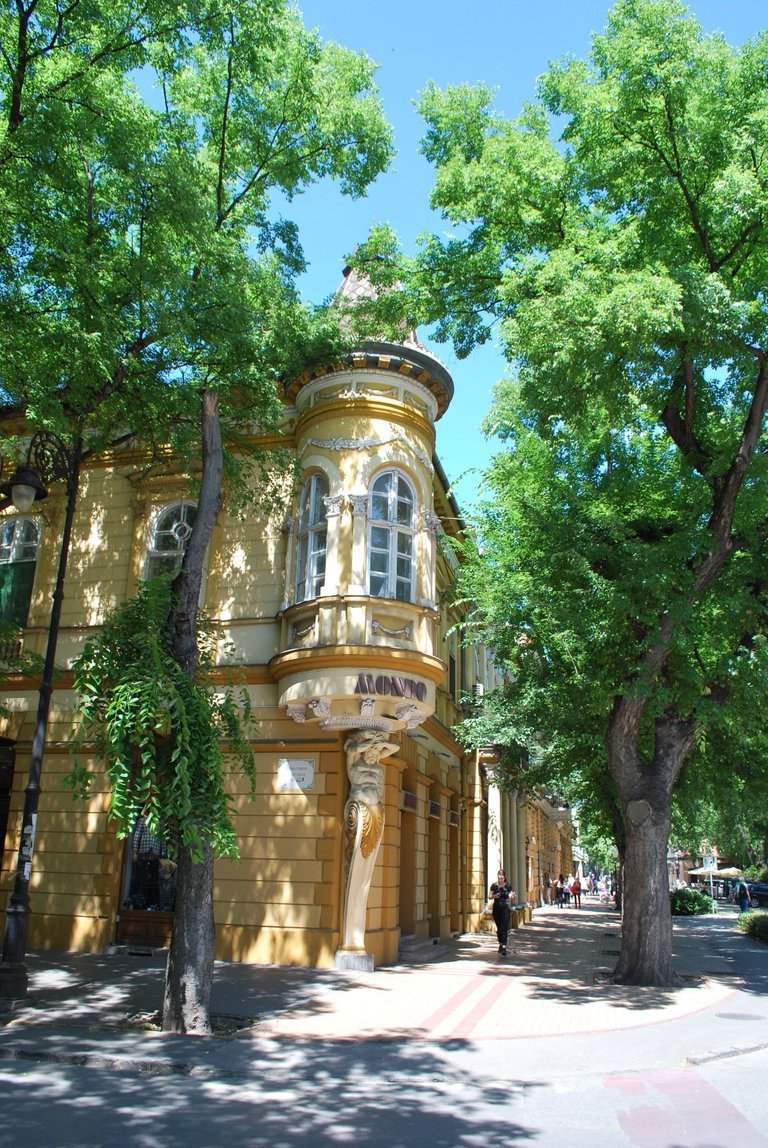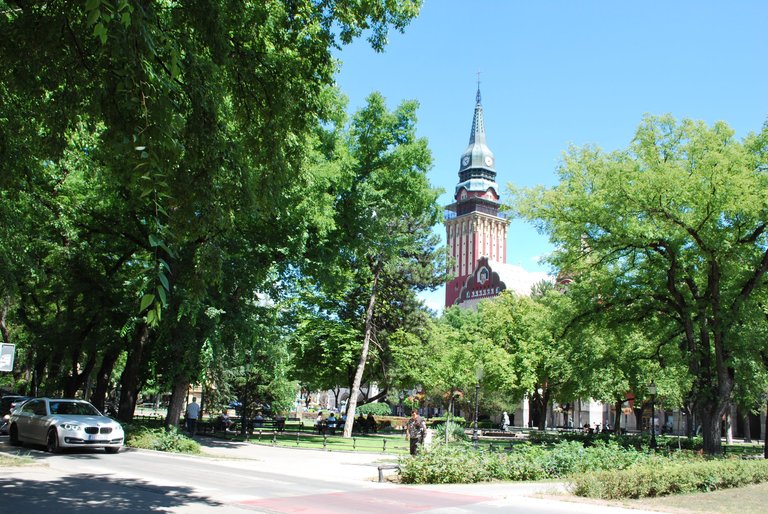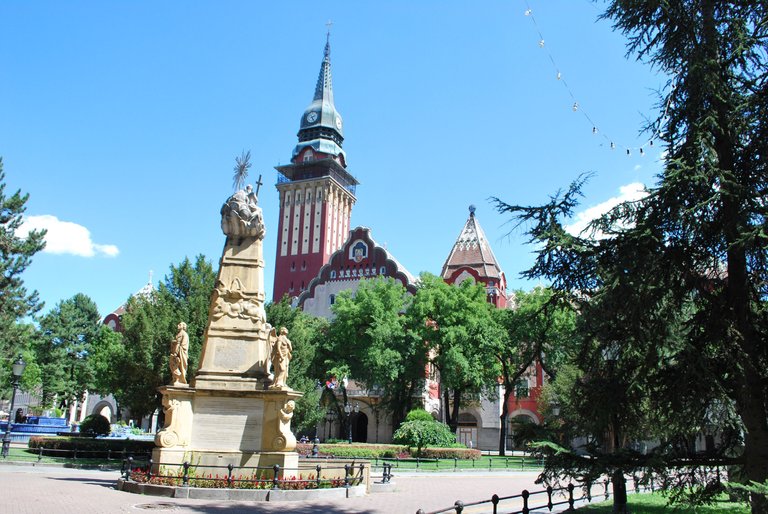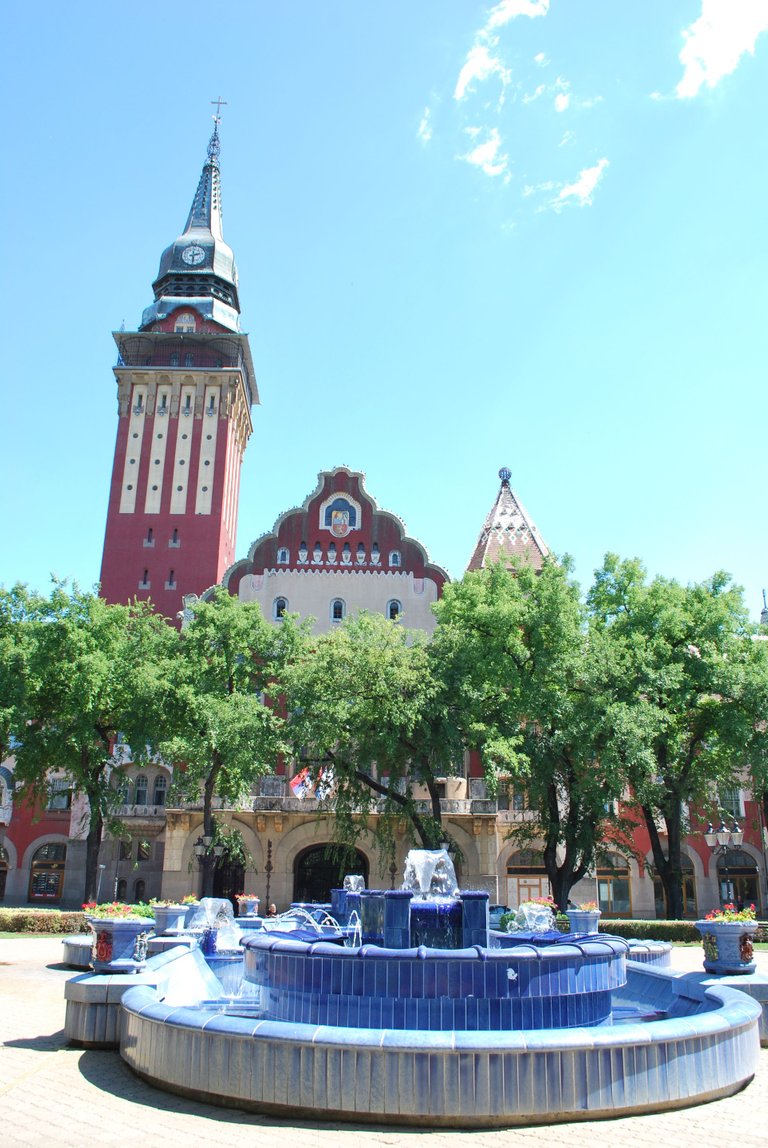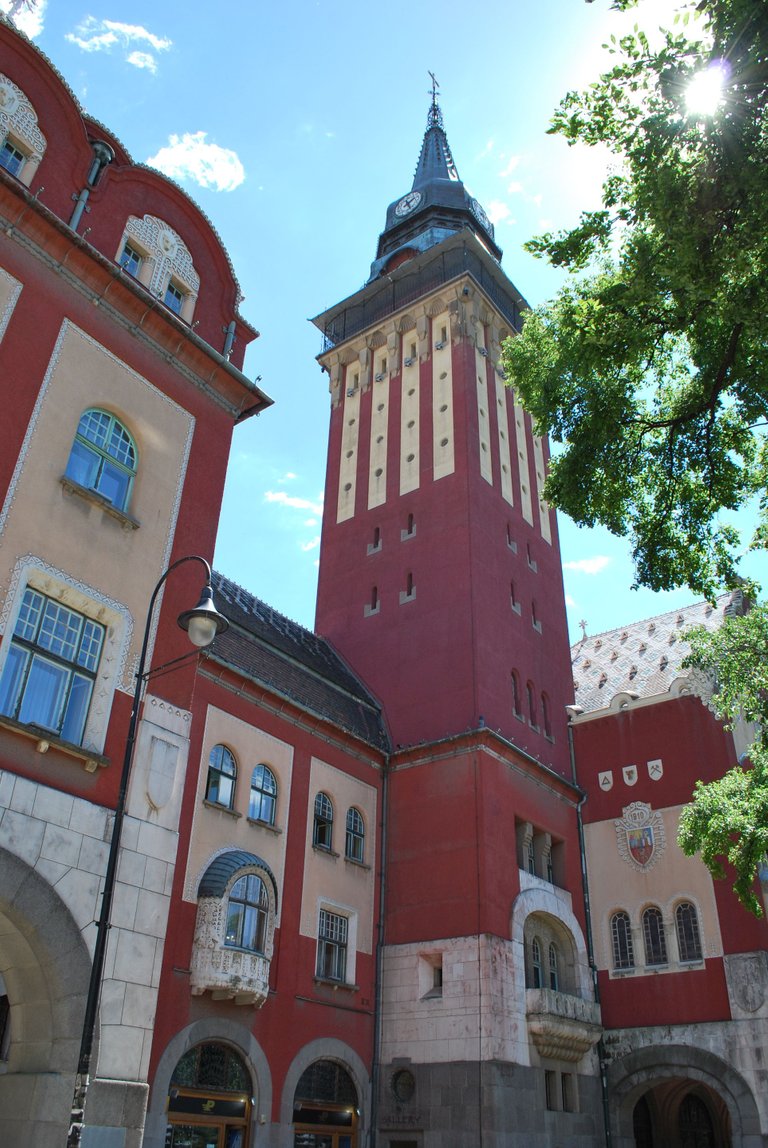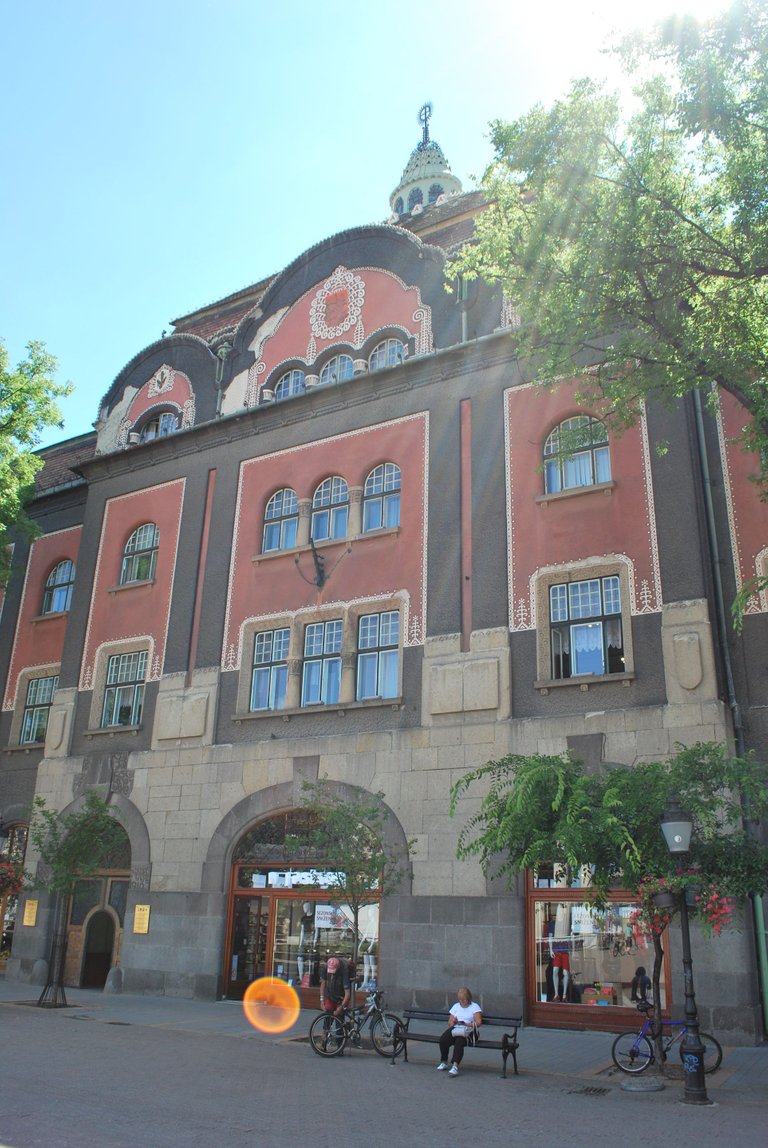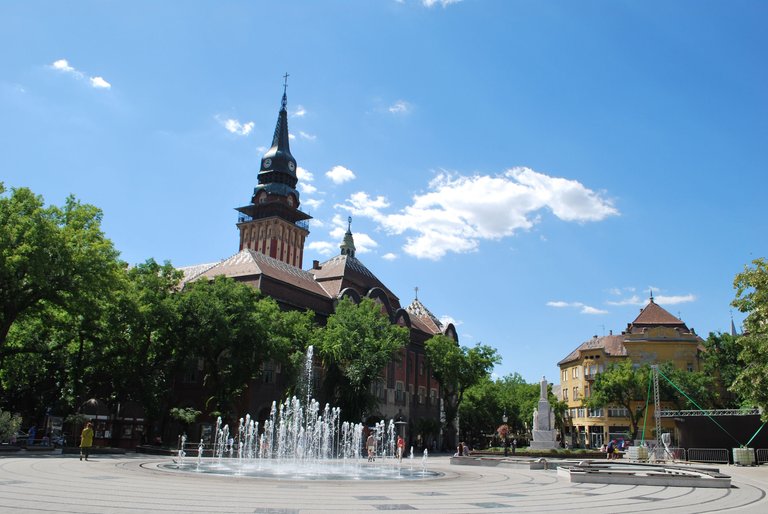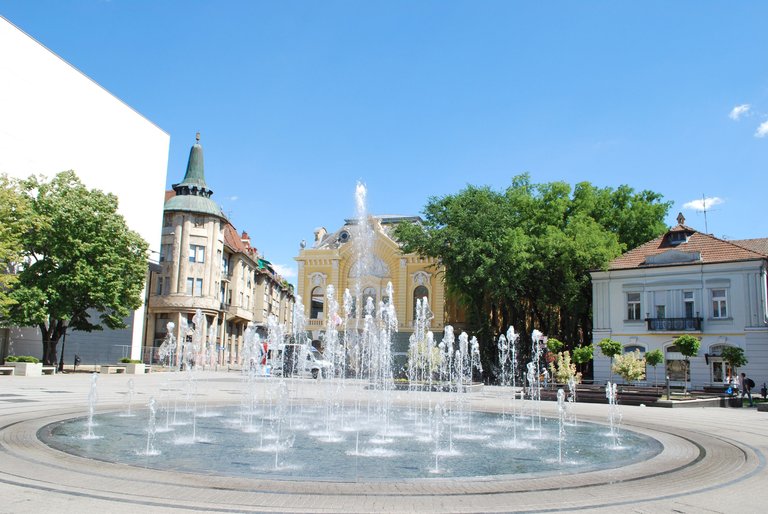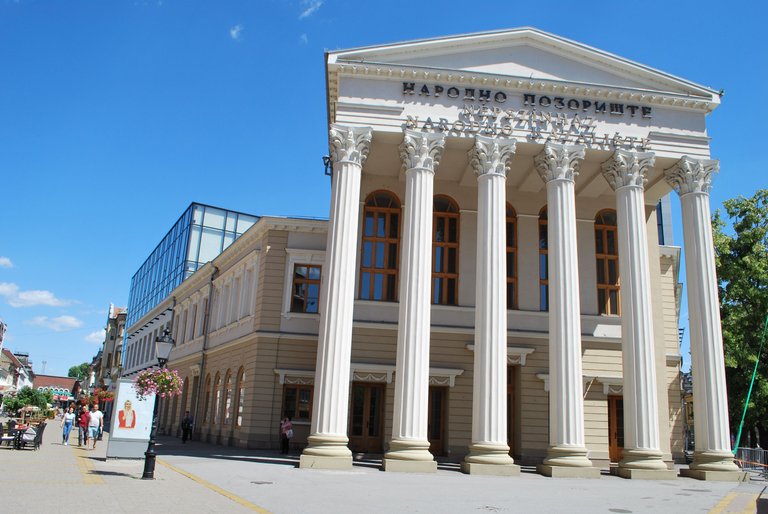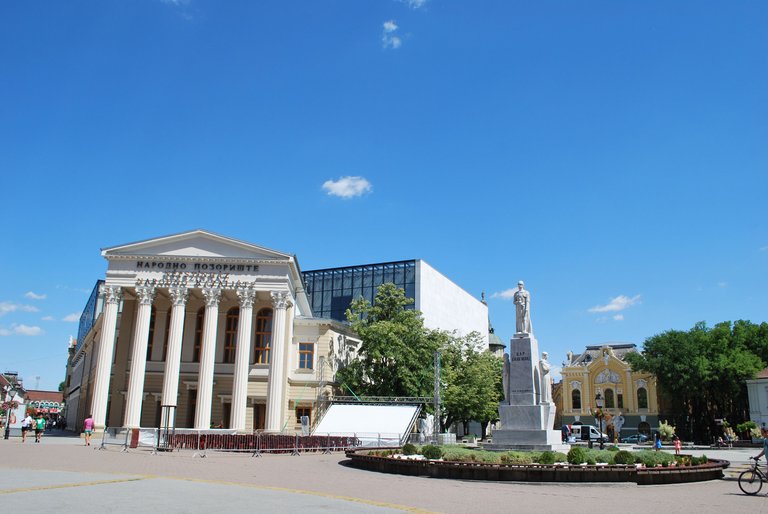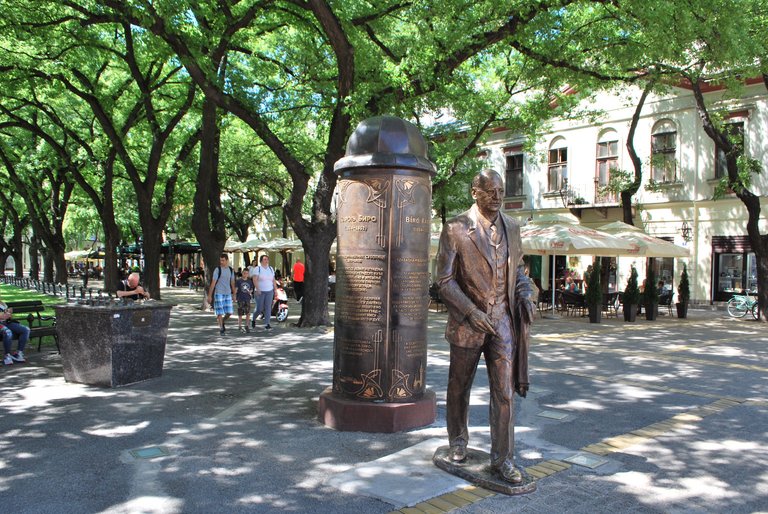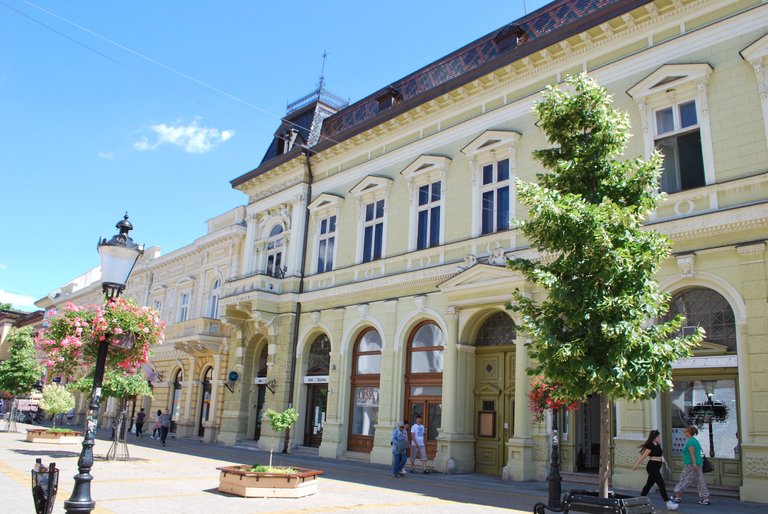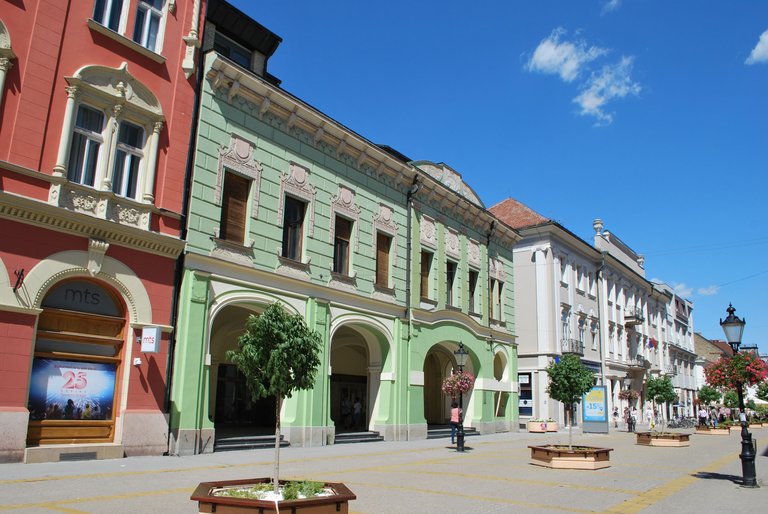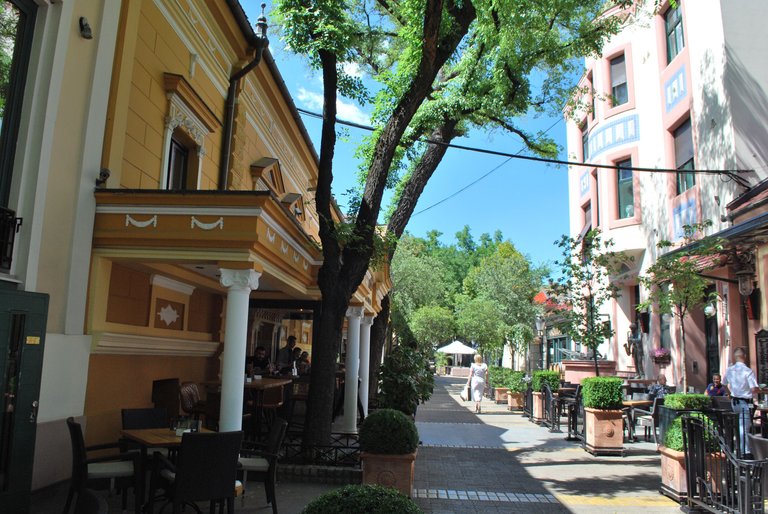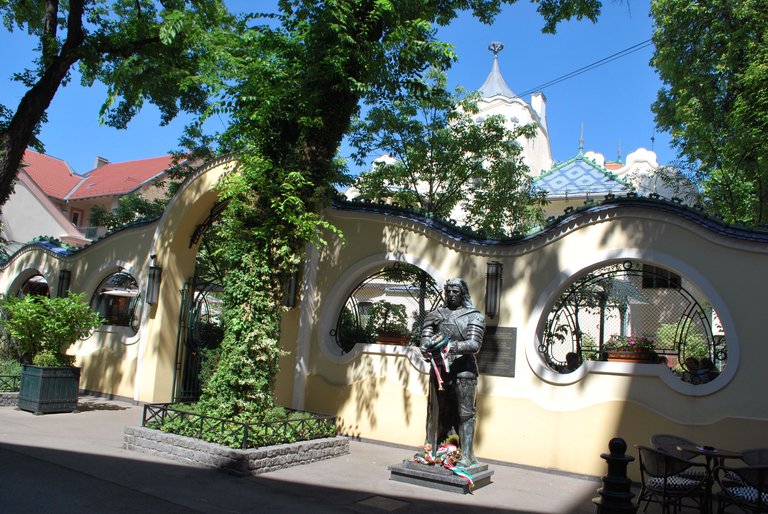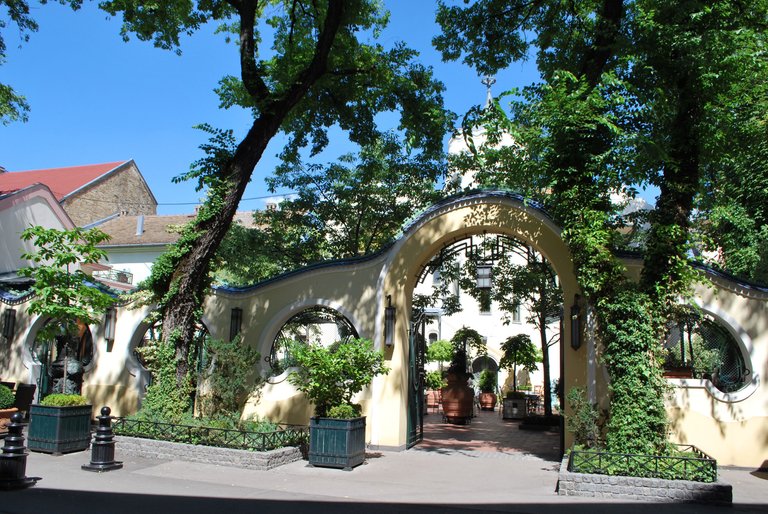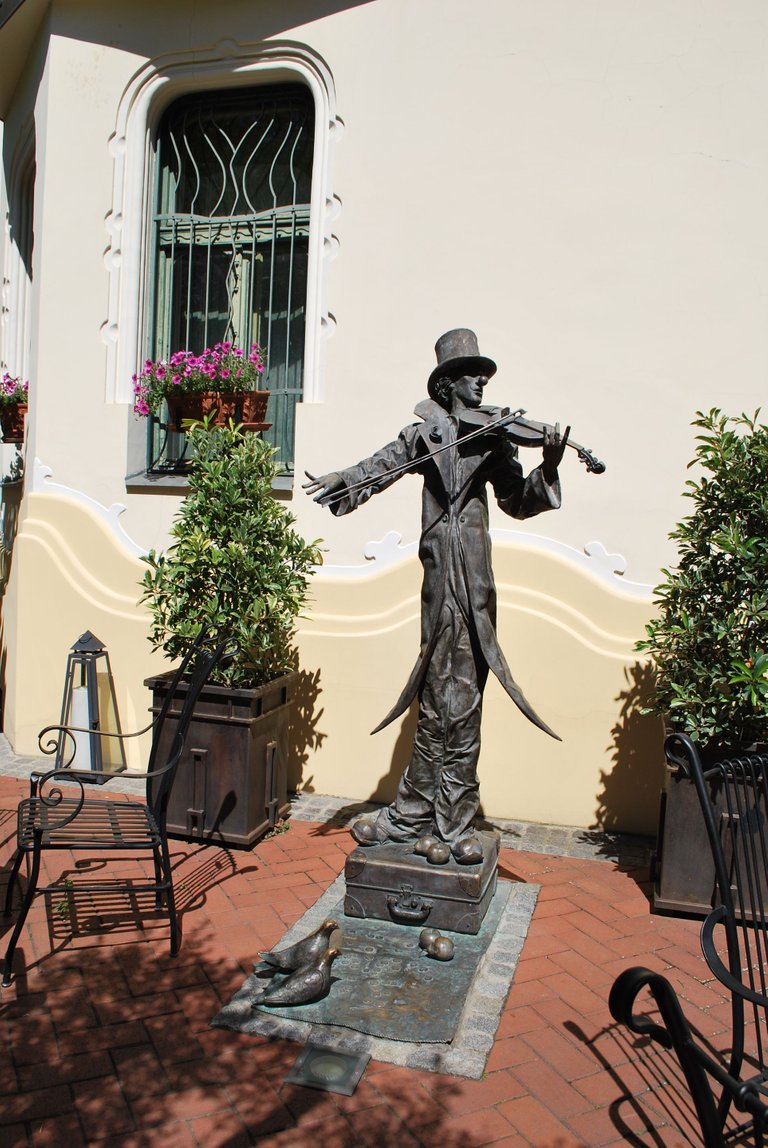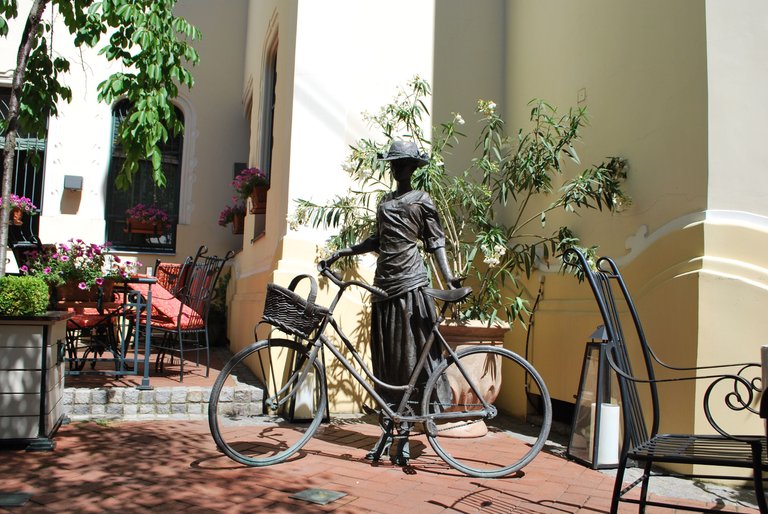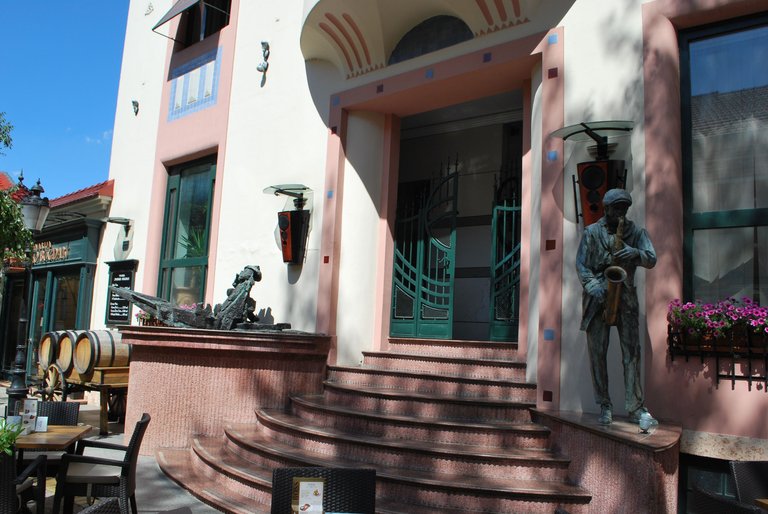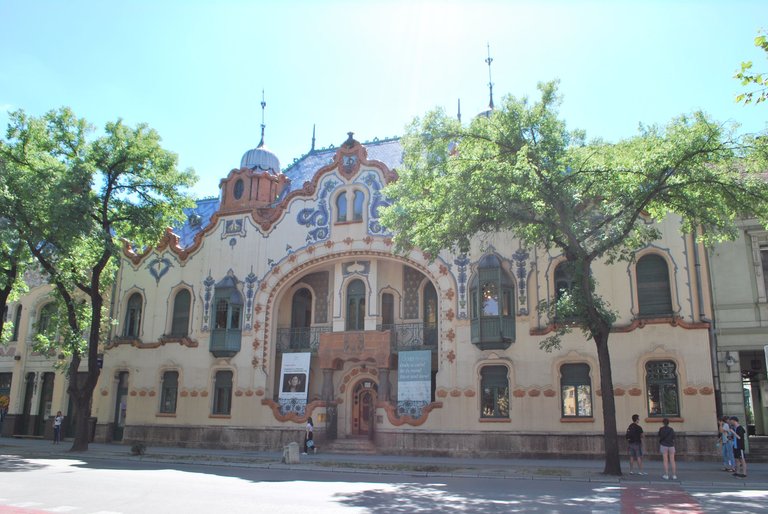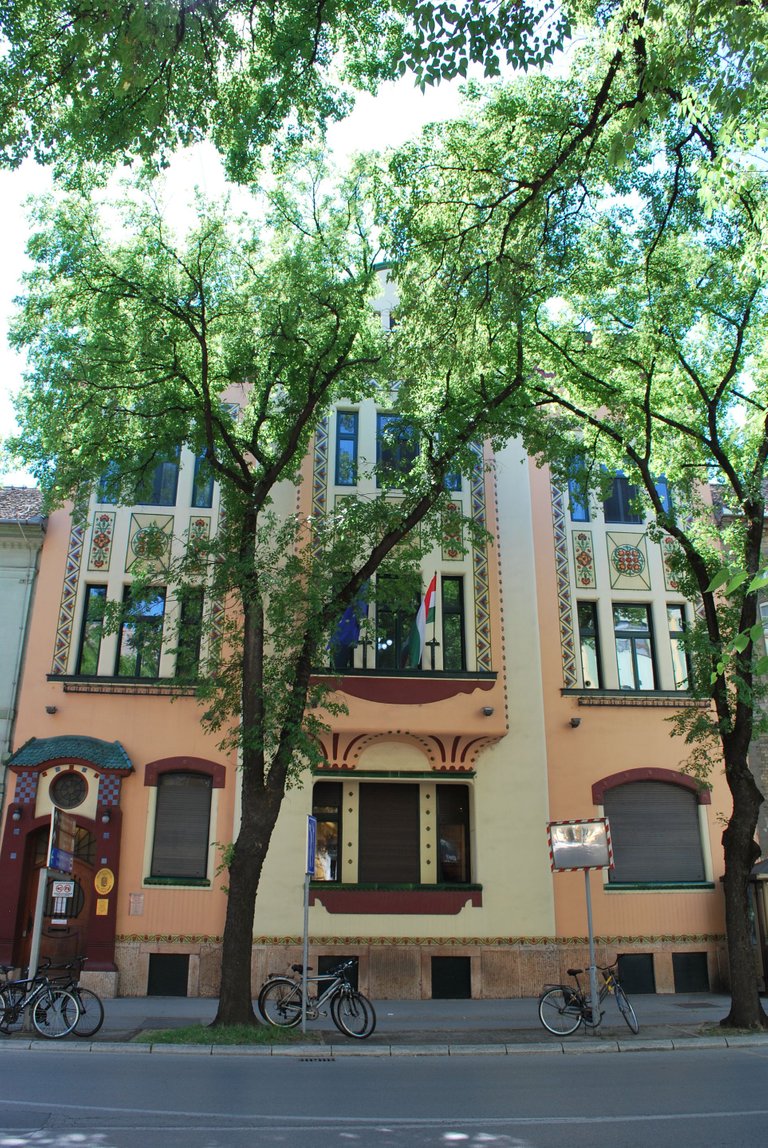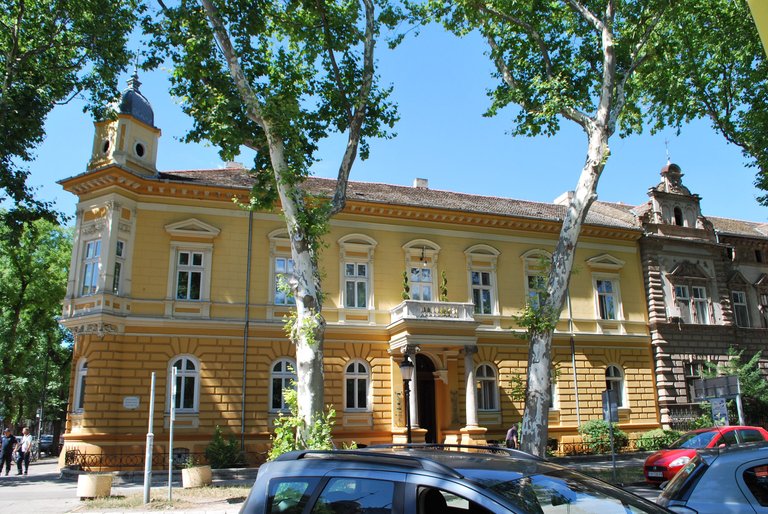The tower of the town hall proudly rises with its beauty and height in this plain, Vojvodina. The city of Subotica, surrounded by fields, charmingly shows off its buildings in the very centre of the city. However, outside the centre, we would get confused and think that we might have found ourselves in a provincial village. It also has its own beauty and charm, but today we will take a walk through the centre of this city. Do you want to join me?
I arrived at Subotica around noon, but I didn't complain about the heat. It was warm, but not that unbearable. Anyway, when I choose something to do, as was the case of visiting Subotica for leisure time, I don't pay attention to heat or cold. I am driven by my wish, and then nothing else really matters.
Our first stop in this post is The Cathedral of St. Theresa of Avila. It was built in the baroque style, like many of the churches in the area. Around the cathedral, I saw a temporary protective fence. We can conclude why it was installed if we notice that the facade of the building is cracked. Actually, I think it is not just the facade that is broken, but the building itself. I have the feeling that each tower is pulling to its side and because of that force, the middle of the church has suffered this break.
This church is not in the strict city centre, but a few minutes away from it. I headed towards the more interesting part of this place, where I could see the town hall, theatre, and the main street. I passed by a building that is probably a small chapel. I didn't go closer to see the name of it, so an unidentified object is what we see here {I would not be surprised if you ditch me now from the role of your touristic guide through Subotica :D}.
Still not in the centre, but the buildings from the time when this region was part of the Austro-Hungarian Empire started to appear in front of my eyes. Also, the tall trees, with their rich canopy, are giving a so nice view. I just love this scenery. I know, that when I will be back in Spain, I will miss the green tall trees on the streets.

Just a few steps from the main attraction of Subotica, the town hall. The only thing I have to do is to cross the street and the small square with a statue and a fountain.
The blue fountain. I know, it is not a super-duper fancy fountain to see... but it is here for a long time, the citizens of Subotica (and the tourists that come here) already know it very well and spend time around it to refresh themselves a bit.
The town hall itself is a symbol of Subotica and the interesting facade of the building is inviting us to learn a bit more about its history. The first feature that we see is the high tower. It goes up 76m.
The architecs were Marcel Komor and Dezső Jakab from Budapest. We see on the facade of this century-old building patterns of stylized flowers, which are here due to the Hungarian romantic influence. Nowadays, apart from housing the historical archives and city administration, the town hall physically gives place to banks and little shops. I don't like to see when a building of historical and cultural importance of a place is used for these purposes.
From the other angle, looking towards the same building, we see another fountain and a bigger square. There were some children playing around the water... Perfect on a warm summer day!

Next to the town hall, we come across the National Theatre. It is a stunning building, now reconstructed as it was in a very bad shape. It was built in the 1854 year. Part of the building received a modern look and it was a topic of discussion for many. Luckily, the entrance stayed faithful to its original appearance.
My next stop, hence your as well if you follow my post, is a small square, with a model of Subotica centre and its main buildings. Next to it, there is a statue, featuring one of the majors of this town, Bíró Károly.

The main street is the favourite promenade of the residents of Subotica. The street is full of palaces ranging from Neo-Renaissance to Classicist, Eclectic, Art Nouveau and all the way to modern buildings. Today, we find shops in most of those houses and palaces and I think this is the fate of most buildings that are found in the narrow centre of an old city.
The facades of the palaces are beautiful, though what I miss here are trees. There are some small ones planted, but those trees still need some years or decades to grow up and give that great shade I like.
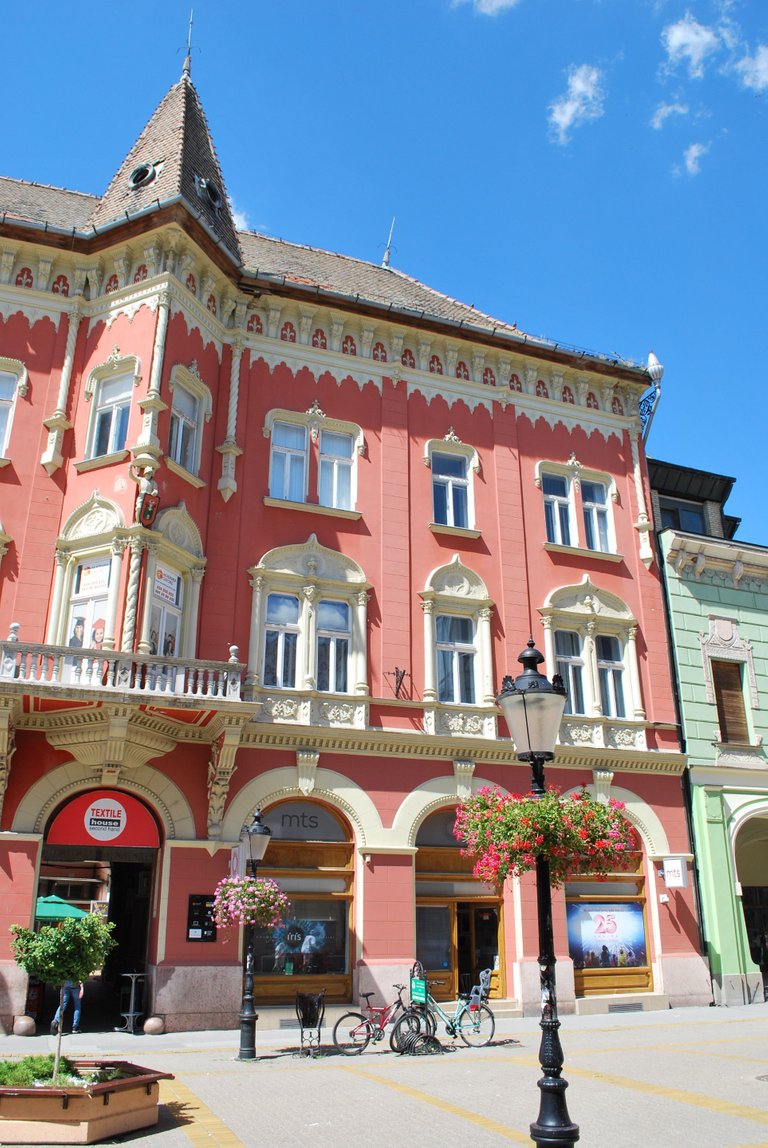
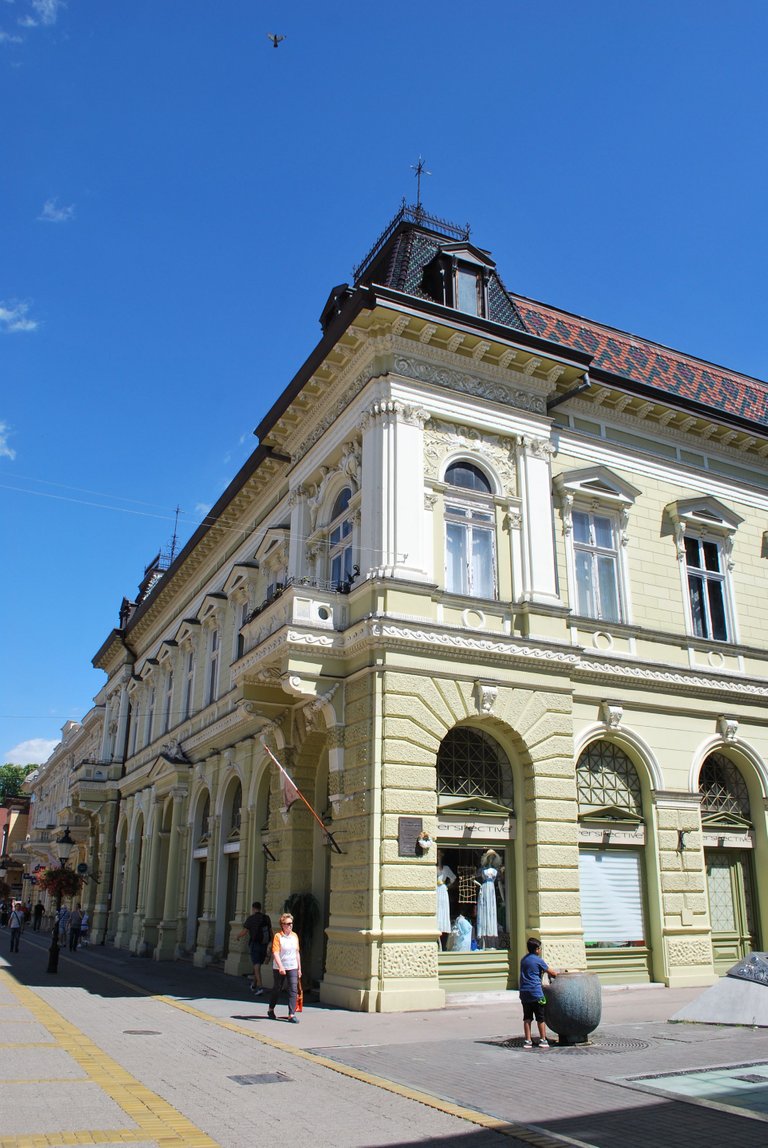

In a side street, the atmosphere is different. Shade, restaurants and cafes, instead of the sun, huge palaces and shops.
The interesting fence you see in the next photo and the palace inside with the garden is now a nice restaurant. The garden contains several statues. I will enter to see them... just a minute!
So, I met this violinist...
...and the lady with the bicycle...
...and one or two houses later, a saxophonist. Must be that a sculptor had an outdoor exhibition, or these statues are already here for a long time? I am not sure, however, they were a nice addition to this side street.

Our last stop is the building of the Consulate of Hungary. We see again the very marked influence of the Hungarian style, with the shape of the windows and facade, as well as the flower decoration and patterns. It is close to the railway station and a small park.
I stayed for a few moments there, in that park which is surrounded by that railway station, the Consulate of Hungary and a street with more of those buildings, so typical for Subotica.
My visit to this city finished with having ice cream to cool down in one of the pastry shops. Was it a good decision to eat ice cream for lunch? I assure you, it was!

